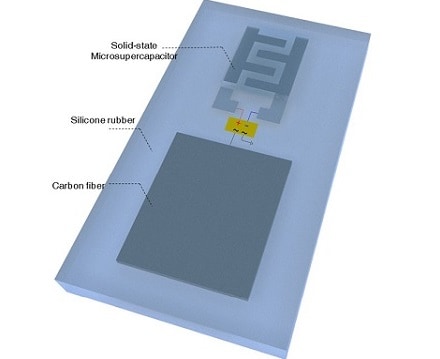Triboelectric nanogenerators integrated into standalone devices
Researchers in Saudi Arabia have integrated triboelectric nanogenerators into small standalone devices, an advance that could lead to self-powered electronics.

Triboelectric nanogenerators (TENGs) capture mechanical energy from their surroundings, such as vibrations and random motion produced by humans, and convert it into electricity. In these tiny generators, frictional contact between materials of different polarity creates oppositely charged surfaces. Repeated friction causes electrons to move between these surfaces, resulting in electric voltage.
“We exploited this triboelectric effect to harvest energy from simple movements, such as hand clapping, finger tapping and routine hand motion, to drive different types of sensors,” said Husam Alshareef, one of the researchers that led the work at KAUST.
The researchers – including Jr-Hau He and Khaled Salama - have developed a self-powered photodetector by coupling the silicone-based polymer polydimethylsiloxane (PDMS) as a TENG with organometallic halide perovskite. The lead-halide-based material features optoelectronic properties that are desirable in solar cells and light-emitting diodes.
To streamline their design and eliminate the need for a motion actuator, He’s team fabricated the photodetector using two multilayered polymer-based sheets separated by a small gap. One sheet comprised the perovskite ultrathin film while the other contained a PDMS layer. The gap allowed the team to harness the triboelectric effect when the device was activated by finger tapping.
Register now to continue reading
Thanks for visiting The Engineer. You’ve now reached your monthly limit of news stories. Register for free to unlock unlimited access to all of our news coverage, as well as premium content including opinion, in-depth features and special reports.
Benefits of registering
-
In-depth insights and coverage of key emerging trends
-
Unrestricted access to special reports throughout the year
-
Daily technology news delivered straight to your inbox










National Gas receives funding to develop Gravitricity underground hydrogen storage system
One single rock salt mine - Winsford - has 23 <i>MILLION </i>cubic metres of void and even allowing for 10% of that void set aside for hazardous waste...